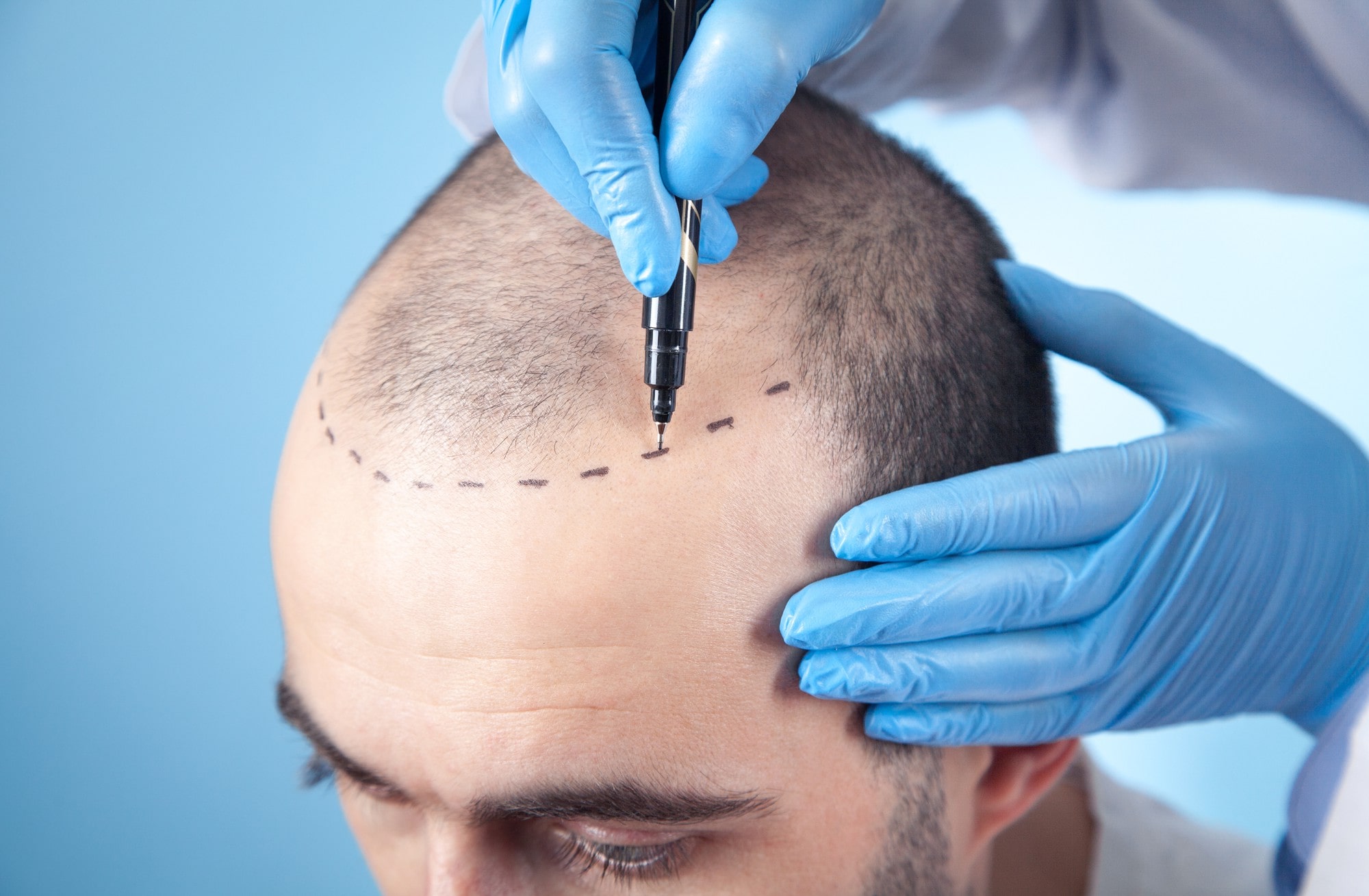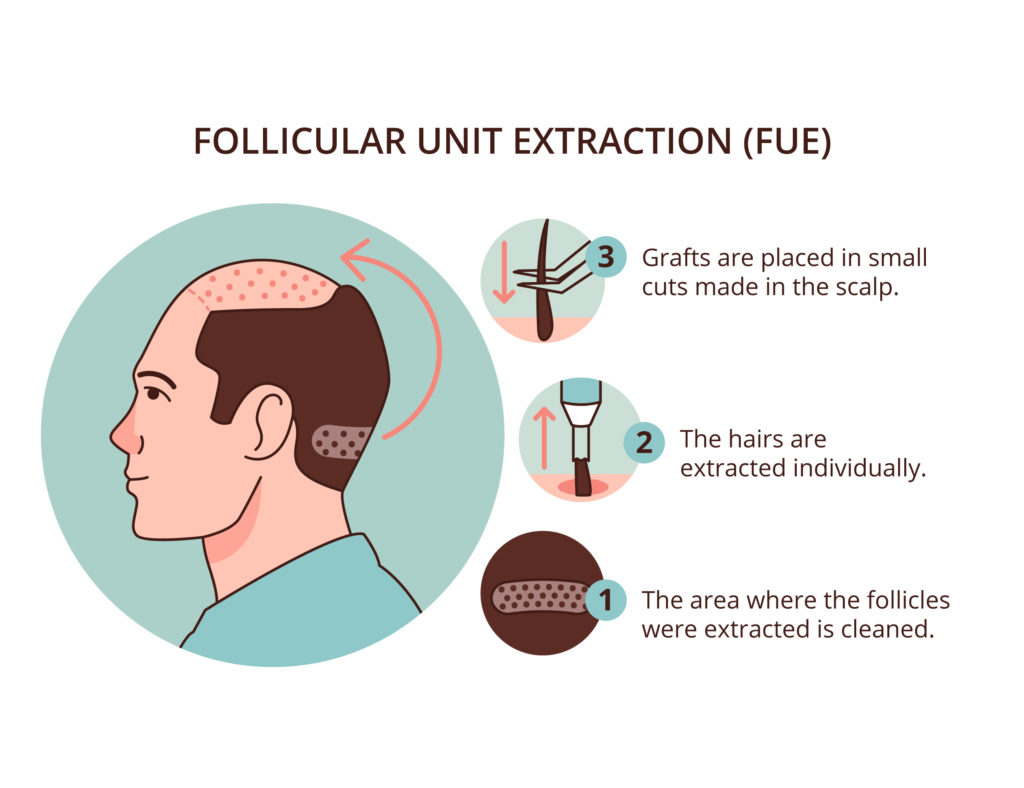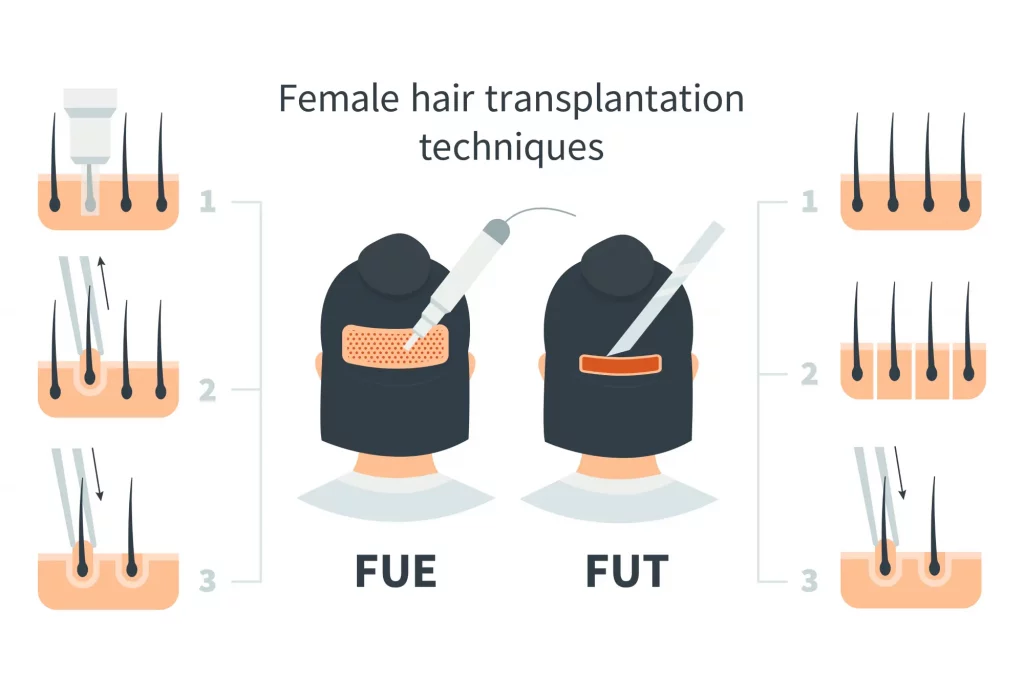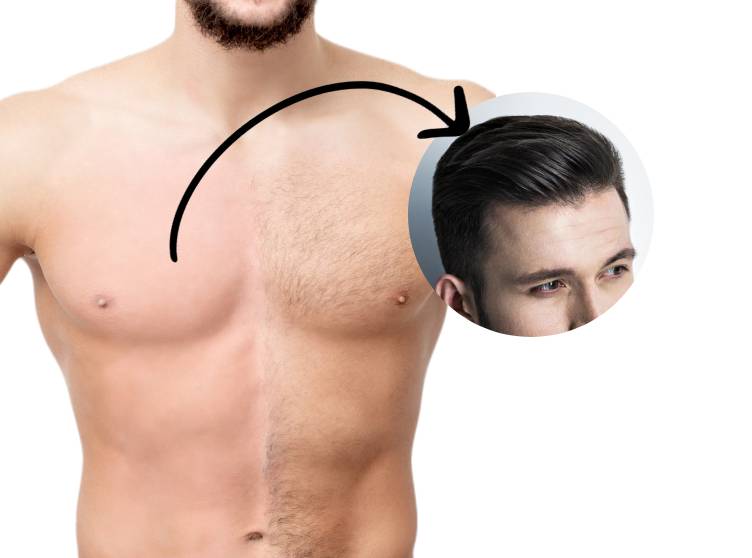
Hair transplant in Bastia
Hair loss can be a source of concern for many people, affecting their confidence and self-esteem. Fortunately, hair restoration offers effective solutions for restoring natural hair.
Hair transplantation is a hair restoration procedure that offers a glimmer of hope to people suffering from permanent baldness, diffuse hair loss or scarring, whether in Bastia or other regions.
The hair transplant process
Hair transplantation is a hair restoration procedure that removes hair follicles from a donor area of the scalp (usually the crown or back of the head) for transplantation to balding or thinning areas. The most common techniques used are FUE (Follicular Unit Extraction) and FUT (Follicular Unit Transplantation). FUE involves the extraction of individual follicles, while FUT involves taking a strip of hair and cutting it into follicular units. This procedure is performed in many cities, including Bastia, where skilled specialists can carry out these procedures with expertise and professionalism.
Ideal candidates
Ideal candidates for hair transplantation are usually men and women with permanent baldness, diffuse hair loss or scars resulting from surgery or injury. A consultation with a hair transplant specialist in Bastia will help assess whether the person is a good candidate for the procedure.
Expected results
After hair transplantation, patients can expect gradual, natural regrowth of the transplanted hair in the months following the procedure. Once healing is complete, hair will grow back like normal hair, allowing patients to regain a more youthful, confident appearance.

The FUE technique
Follicular Unit Extraction (FUE) is one of the most commonly used methods of hair transplantation, and is widely practiced in Bastia. It stands out for its more meticulous, less invasive approach than the strip method (FUT). Here’s how the FUE technique works.
- Individual removal of hair follicles: Unlike the FUT method, which involves cutting a strip of skin containing hair follicles, FUE involves removing each follicle individually. This is done using a small circular instrument, usually 0.8 millimeters in diameter. The specialized practitioner makes small incisions around each follicle, then gently extracts them from the skin using ophthalmic tweezers.
- Follicle preparation: Once the hair follicles are harvested, they are sorted, cleaned and prepared for transplantation. Follicular units are selected according to quality and type (1, 2, 3, 4 or more hairs per follicular unit).
- Follicle transplantation: The prepared follicles are then implanted in the recipient areas, where hair loss is visible. The team creates small incisions in the recipient area following a natural hair growth pattern (inclinations and directions), then inserts the follicles one by one into these incisions.
- Healing and regrowth: After transplantation, follicles undergo a resting phase and transplanted hair falls out. However, the follicles are still alive and after a while, new hair begins to grow from them. Regrowth may take several months before full results become visible.
The FUE technique offers several advantages over the FUT method, including:
- No linear scarring: FUE generally leaves no visible linear scar, unlike the FUT method, which leaves a scar where the strip of skin is removed.
- Faster recovery: FUE tends to result in faster recovery, as it does not involve extensive suturing or prolonged healing time of the donor area.
- Possibility of harvesting follicles from different areas: The FUE technique allows follicles to be harvested from different parts of the body, which can be useful if the donor area on the scalp is limited.
However, it is important to note that the FUE technique requires considerable expertise to achieve natural, aesthetic results. Experienced hair transplant teams can tailor the FUE technique to each patient’s unique characteristics to achieve the best possible results. Before deciding to undergo FUE hair transplantation, it is advisable to consult a specialized healthcare professional to discuss your needs and expectations.
The FUT technique at Bastia
Follicular Unit Transplantation (FUT) is a method of hair transplantation practiced in Bastia and involving the harvesting of a strip of skin containing hair follicles from the donor area. This is followed by the preparation and transplantation of these follicles into bald or sparse areas. Here’s how the FUT technique works at Bastia.

- Strip removal: The surgeon marks and anesthetizes the donor area, usually located at the back or sides of the head, where hair is thicker and less prone to shedding. Next, a strip of skin is carefully removed using a surgical scalpel. This strip contains hair follicles, blood vessels and supporting tissue.
- Suturing the donor area: After removing the strip, the donor area is sutured to close the wound. Sutures may be dissolving or may need to be removed after a set period of time.
- Follicle preparation: The strip is then cut into smaller follicular units, usually called micrograft or minigraft. These units are sorted and cleaned ready for transplanting.
- Creating incisions in the recipient area: The surgeon creates small incisions in the recipient area (where hair loss is visible) following a natural pattern of hair growth. These incisions are crucial in determining the angle, direction and density of transplanted hair regrowth.
- Follicle implantation: The micrografts or minigraft are carefully implanted one by one into the incisions created in the recipient area. The surgeon takes care to follow the natural pattern of the hair to achieve an aesthetically consistent result.
- Healing and regrowth: After transplantation, a period of healing is necessary. Transplanted hair usually falls out in the weeks following the procedure, but the follicles remain active. New hair will gradually begin to grow back over the following months.
The FUT technique was one of the first hair transplant methods used and has proven its effectiveness for many patients. However, it leaves a linear scar at the donor site, which can be an inconvenience for some patients. This scar is usually hidden by the growth of the surrounding hair, but it can be a worrying factor for those who prefer to wear their hair very short.
As with any medical procedure, it is advisable to consult a specialized healthcare professional to discuss your options and determine the best approach based on your needs and expectations.

Female hair transplant in Bastia
Hair transplantation for women is a similar procedure to that for men, but there are some specific differences and considerations to take into account due to variations in hair loss patterns between the sexes.
Women can also experience hair loss due to factors such as genetics, aging, hormonal imbalances, stress and other medical conditions. Hair transplants may be an option for treating hair loss in women; however, it is important to note that patterns of hair loss in women are often more diffuse and extensive than in men. Consequently, planning a hair transplant for women requires careful evaluation of the donor and recipient areas.
Here are some considerations specific to hair transplantation for women.
- Precise assessment: A hair transplant specialist will carefully assess the donor and recipient areas to determine the feasibility of the transplant. Women with smaller donor areas may require more strategic planning.
- Hair density: Women generally have a higher hair density at the back of the head (donor area) than men. This can be beneficial in harvesting sufficient hair follicles for transplantation.
- Hair loss patterns: Hair loss patterns in women are different from those in men. Women may experience diffuse hair loss over the entire head, rather than the typical male pattern baldness. This can influence the way follicles are harvested and transplanted.
- Realistic expectations: It’s important for women to have realistic expectations about hair transplant results. Hair restoration can improve the appearance and density of hair, but it cannot always restore 100% thick, full hair.
- Specialized consultation: Before deciding to undergo a hair transplant, it’s essential to consult an experienced hair restoration specialist to discuss options, expectations and likely results.
Ultimately, hair transplants for women can be a viable solution for treating hair loss, but each case is unique.
The BHT (body hair transplant) technique: removal of body hair
Body Hair Transplant (BHT) is a method of hair transplantation in which hair follicles are harvested from various parts of the body, such as the chest, back and legs, and then transplanted to the scalp to treat hair loss. This technique is used when the traditional donor area (back of the head) does not provide sufficient hair follicles or when patients do not have adequate hair density in this area.
Here’s how the BHT technique generally works

- Body hair harvesting: Hair is harvested using the FUE (follicular unit extraction) method from areas of the body where hair growth is denser. Areas commonly used to remove body hair include the chest, back and shoulders.
- Follicle preparation: Hair follicles taken from body hair are sorted and prepared in the same way as follicles taken from the head.
- Follicle transplantation: Prepared follicles are transplanted onto the scalp in recipient areas where hair loss is visible. The specialized team creates small incisions in the recipient area and inserts the follicles one by one.
- Healing and regrowth: Transplanted follicles go through a resting period and transplanted hairs usually fall out before new hairs start to grow back. Regrowth can take several months.
The BHT technique can prove invaluable, particularly in Bastia, in cases where the patient has advanced hair loss, low hair density in the traditional donor area or scars on the scalp, making conventional hair transplantation a delicate operation. However, it’s important to note that body hair differs from scalp hair, particularly in terms of texture and growth rate, which can influence results.
Make an appointment for a hair transplant in Bastia
The first consultation for a hair transplant in Bastia is free to determine the best approach for your individual needs.
Bastia, the jewel of Corsica
Saint-Jean-Baptiste church Bastia

History and Heritage
Bastia, located in the north-east of Corsica, is a city rich in history and culture. Founded in the 14th century, it has long been the island’s main port and the seat of the Genoese governor. Its historic heritage is still visible today in its architecture, particularly in the old port, Vieux Bastia, with its colorful houses, narrow streets and Baroque churches, including the emblematic Église Saint-Jean-Baptiste.
The Old Port and the Citadel
Bastia’s Vieux Port is the beating heart of the city. It’s a lively place, full of cafés, restaurants and small boutiques. The view of the harbour from the Terrasse du Bar de la Marine is particularly picturesque. The Citadelle, also known as Terra Nova, perched high above the port, offers a walk back in time with its cobbled streets, ancient ramparts and breathtaking views of the Mediterranean.
Culture and Traditions
Bastia is an important cultural center in Corsica. It hosts numerous festivals and events throughout the year, including the Italian Film Festival and the Bastia Music Festival. The town is also renowned for its culinary traditions, including cured meats, cheeses and Corsican wines. The Place du Marché market is a meeting place for locals and tourists alike, offering an authentic glimpse of local life.
Beaches and Nature
Although known for its urban heritage, Bastia is also surrounded by natural beauty. Beaches such as Arinella and Marana offer idyllic landscapes for relaxation and water sports. The coastal path from Bastia harbour leads to hidden coves and spectacular views of the sea and mountains.
Exploration and Discovery
The area around Bastia is full of sites to explore. Cap Corse, with its picturesque villages such as Erbalunga and Nonza, offers a unique cultural and natural experience. Hiking enthusiasts will love the many trails in Cap Corse and the nature reserve on the island of Étang de Biguglia.
Modern Bastia
Bastia has managed to evolve, preserving its historic character while at the same time modernizing. New areas such as the Lupino district and the renovated seafront combine modernity and tradition, offering residents and visitors contemporary spaces for leisure and relaxation.



